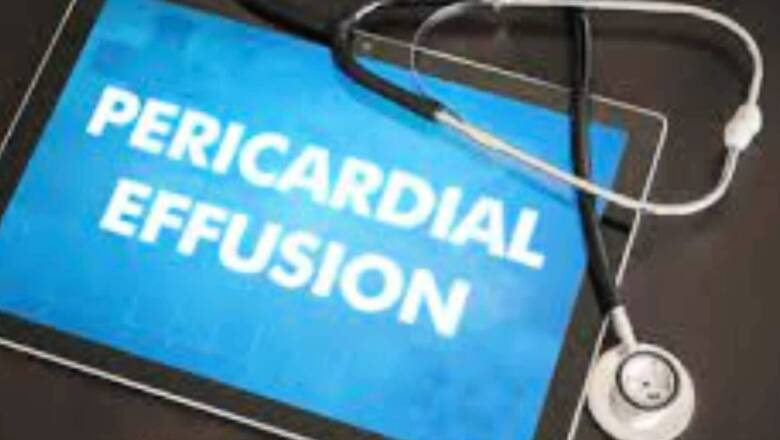
views
Heart disease is no longer a problem associated with age. There has been a sudden increase in cases of heart attacks even in individuals in their 20s or 30s. Heart failure, heart valve disease, and arrhythmias are frequent conditions with a sizable patient population. While these problems are talked there are many silent killers that get unnoticed. One such fatal condition is pericardial effusion, which occasionally goes undetected until it becomes severe.
A pericardial effusion is an accumulation of fluid around the heart that can be caused by several disorders, including traumas, infections, immune system conditions, inflammatory disorders and other illnesses. The heart may get compressed if the accumulation is substantial or occurs fast, which might result in cardiac tamponade, a potentially fatal medical emergency. The pressure from a pericardial effusion may alter how the heart beats. In severe circumstances, it might result in mortality if left untreated and cause heart failure.
When the heart beats, it moves freely inside this sac. The two layers of the sac are normally filled with a clear, yellow pericardial fluid that helps the heart move more easily within the sac and is roughly equivalent to two to three teaspoons. However, the ensuing inflammation from pericardial illness or injury might result in an excessive amount of fluid formation. As a result of bleeding, cancer-related conditions, or chest injuries, the fluid can sometimes accumulate around the heart without there being any inflammation.
Pericardial effusions might go unnoticed, particularly if the fluid buildup above the necessary threshold gradually develops. Symptoms are more likely to appear when an effusion happens rapidly, contains a large volume of fluid, or causes cardiac tamponade. The basic symptoms of cardiac tamponade and pericardial effusions are as follows:
- Lightheadedness or dizziness.
- Fatigue.
- Shortness of breath.
- Fainting.
- Chest pressure or pain.
- Fast heartbeat or heart palpitations.
- Anxiety and sudden behaviour changes.
Cyanosis or a blue or grey tinge to your lips due to low blood oxygen levels.
If a pericardial effusion is significantly large and can press on surrounding tissues or nerves it shows symptoms such as inability to swallow food, hiccups, coughing as well as hoarseness in the voice.
Read all the Latest Lifestyle News here



















Comments
0 comment